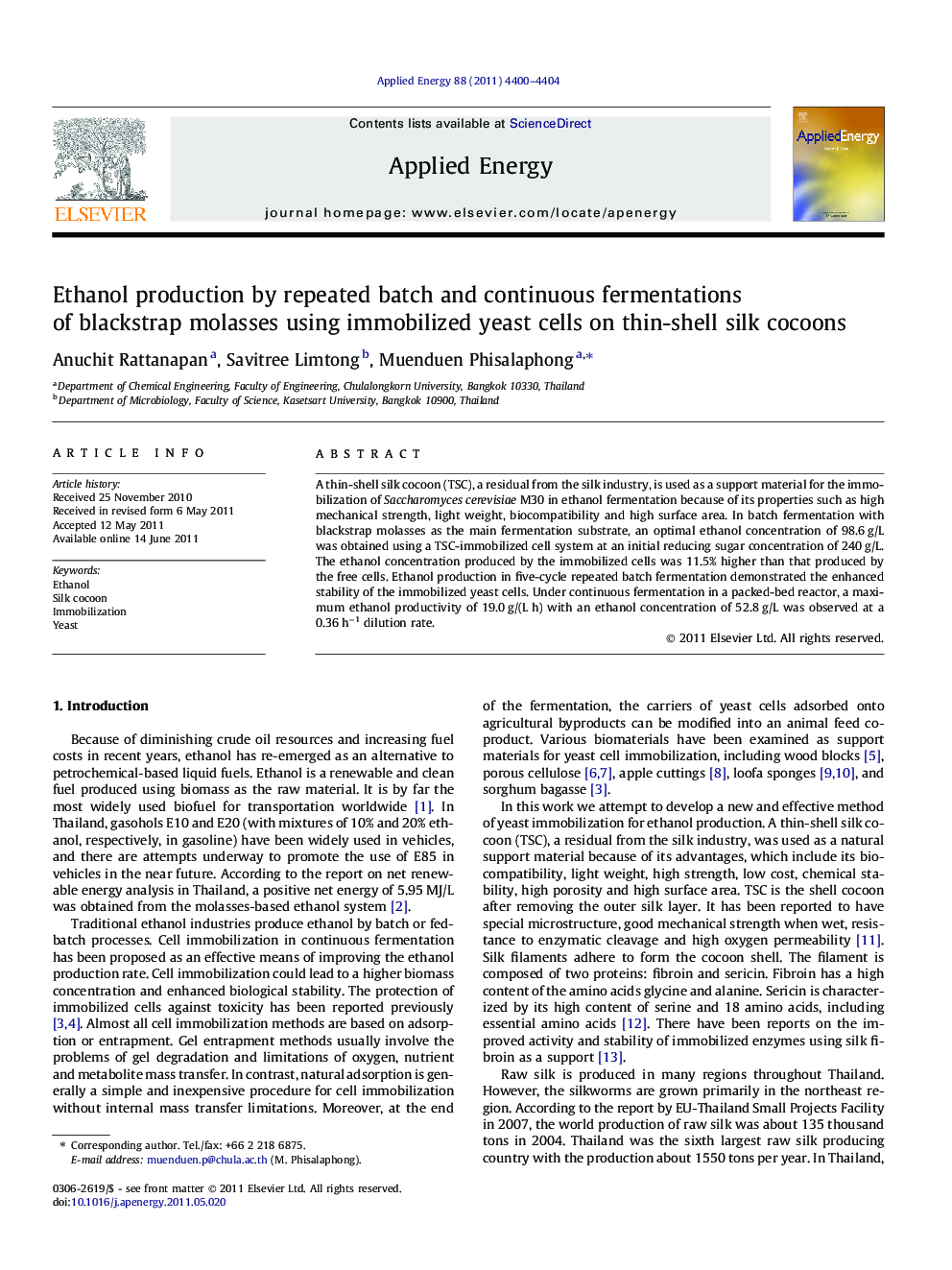| Article ID | Journal | Published Year | Pages | File Type |
|---|---|---|---|---|
| 243960 | Applied Energy | 2011 | 5 Pages |
A thin-shell silk cocoon (TSC), a residual from the silk industry, is used as a support material for the immobilization of Saccharomyces cerevisiae M30 in ethanol fermentation because of its properties such as high mechanical strength, light weight, biocompatibility and high surface area. In batch fermentation with blackstrap molasses as the main fermentation substrate, an optimal ethanol concentration of 98.6 g/L was obtained using a TSC-immobilized cell system at an initial reducing sugar concentration of 240 g/L. The ethanol concentration produced by the immobilized cells was 11.5% higher than that produced by the free cells. Ethanol production in five-cycle repeated batch fermentation demonstrated the enhanced stability of the immobilized yeast cells. Under continuous fermentation in a packed-bed reactor, a maximum ethanol productivity of 19.0 g/(L h) with an ethanol concentration of 52.8 g/L was observed at a 0.36 h−1 dilution rate.
► Thin-shell silk cocoons for immobilization of Saccharomycescerevisiae. ► Advantages: high mechanical strength, light weight, biocompatibility and high surface area. ► Enhanced cell stability and ethanol productivity by the immobilization system.
